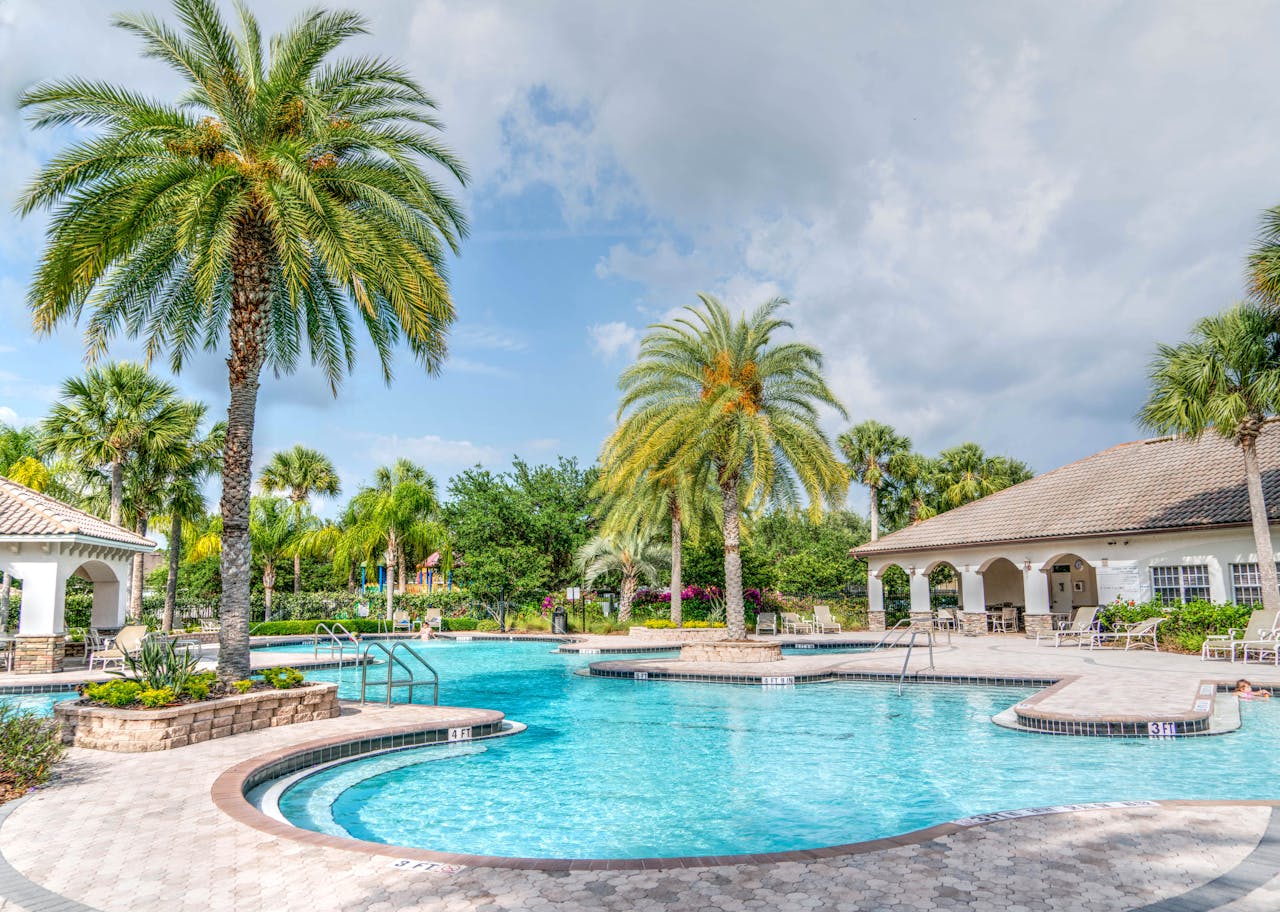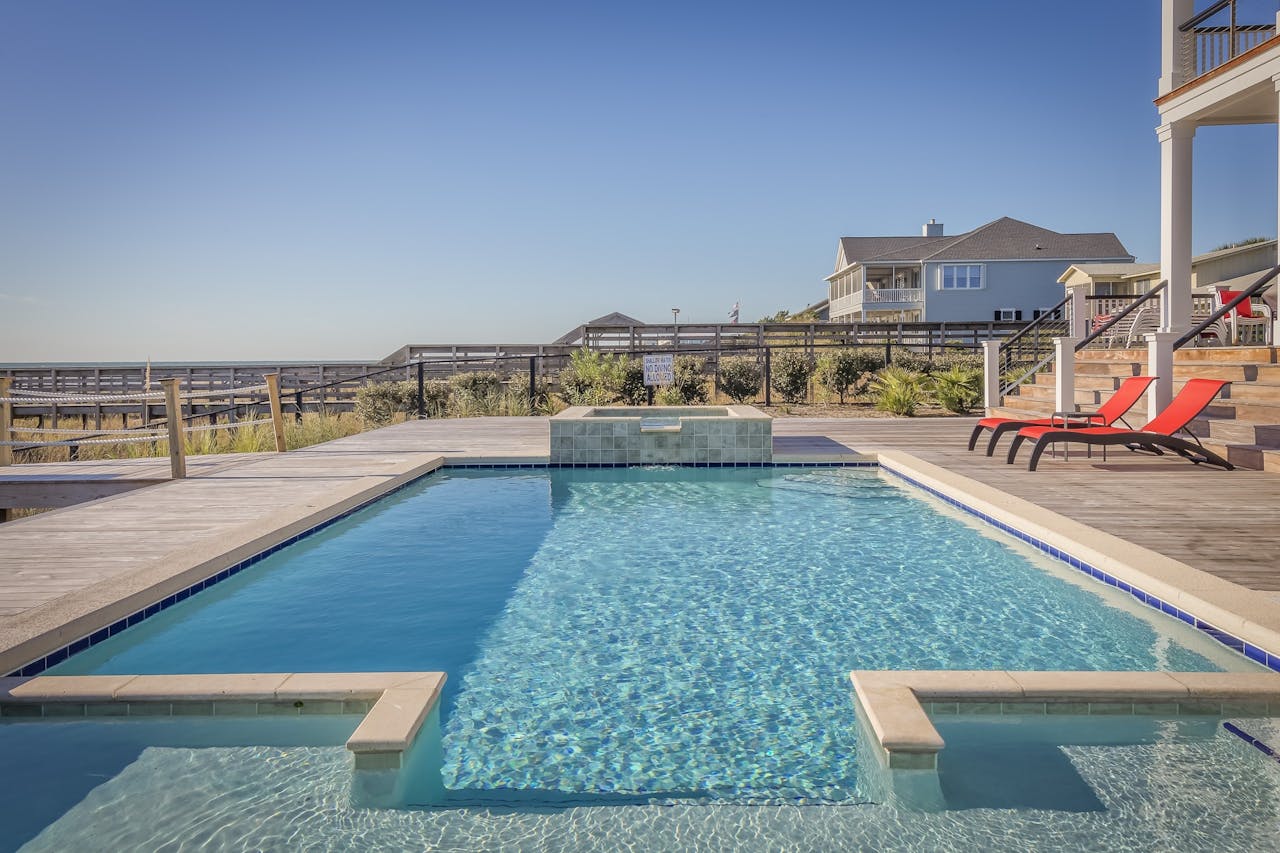Owning a pool is a fantastic luxury, but like any valuable asset, it requires proper care and maintenance. Occasionally, even the most well-maintained pools encounter problems. Fortunately, most issues can be diagnosed and resolved with some knowledge and effort. Here are five common pool problems and how you can fix them to ensure your pool stays sparkling and inviting.
1. Cloudy Water
Problem: Cloudy water is one of the most common complaints among pool owners. It can make your pool look uninviting and signal poor water quality.
Causes:
- Poor filtration or circulation.
- Imbalanced chemical levels, such as low chlorine or high pH.
- Debris buildup or fine particles suspended in the water.
Solution:
- Test and Balance Chemicals: Use a pool testing kit to check chlorine, pH, alkalinity, and calcium hardness. Adjust these levels as needed. Chlorine should ideally be between 1–3 ppm, and pH should be between 7.4–7.6.
- Clean Filters: If your filter is dirty or clogged, it won’t remove impurities effectively. Clean or backwash the filter to improve water clarity.
- Shock the Pool: Add a chlorine shock treatment to kill bacteria and oxidize particles. Follow the manufacturer’s dosage instructions.
- Run the Pump: Ensure your pool pump is running for at least 8–12 hours a day to circulate water and prevent stagnation.
Prevention Tip: Regularly clean and maintain your pool filter and test water chemistry weekly to avoid cloudiness.
2. Algae Growth
Problem: Algae is a nuisance that can turn your pool green, yellow, or even black if left untreated. It thrives in stagnant, poorly sanitized water.
Causes:
- Insufficient chlorine levels.
- Poor water circulation.
- Warm weather or excessive sunlight.
Solution:
- Shock the Pool: Apply a heavy dose of chlorine shock to kill algae growth. Follow up with an algaecide for stubborn cases.
- Brush and Vacuum: Thoroughly brush the walls and floor of your pool to loosen algae. Vacuum debris to prevent it from reattaching.
- Filter Maintenance: Clean or backwash your filter after removing algae to ensure it doesn’t recirculate in the pool.
Prevention Tip: Keep chlorine levels consistent and run the pump for adequate circulation. Using a pool cover when the pool isn’t in use can also help prevent algae from forming.
3. Broken Pool Pump
Problem: The pool pump is the heart of your pool’s circulation system. When it’s not functioning properly, water quality can quickly deteriorate.
Causes:
- Clogged pump baskets or debris blocking the impeller.
- Worn-out parts, such as seals or bearings.
- Electrical issues, including improper voltage or tripped breakers.
Solution:
- Inspect for Debris: Turn off the pump and check for blockages in the skimmer baskets, pump basket, or impeller. Remove any debris you find.
- Check Electrical Connections: Ensure the pump is receiving the correct voltage. Reset the breaker if it has tripped.
- Call a Professional: If the pump motor is making unusual noises, overheating, or showing signs of wear, it’s best to have it inspected and repaired by a pool technician.
Prevention Tip: Regularly clean out baskets and ensure the area around the pump is free from debris. Schedule annual inspections to catch small issues before they become big problems.
4. Pool Leaks
Problem: A leaking pool can waste water and increase your bills. Left untreated, it can cause structural damage or other costly repairs.
Causes:
- Cracks in the pool shell or liner.
- Loose fittings or damaged plumbing.
- Worn-out pool equipment.
Solution:
- Conduct a Bucket Test: Place a bucket filled with water on a pool step. Mark the water level inside the bucket and the pool’s water level. After 24 hours, compare the two. If the pool water has dropped more than the bucket, you likely have a leak.
- Inspect Visible Areas: Look for cracks, damaged fittings, or wet spots around the pool.
- Call an Expert: For hidden leaks, professional leak detection equipment is often required. Gene’s Pools can help locate and repair leaks effectively.
Prevention Tip: Regularly inspect your pool’s surface, plumbing, and equipment to catch early signs of leaks.
5. Chlorine Odor
Problem: Contrary to popular belief, a strong chlorine smell doesn’t mean your pool has “too much” chlorine. It’s actually a sign of chloramine buildup, which occurs when chlorine reacts with organic matter like sweat, sunscreen, or urine.
Causes:
- Insufficient free chlorine to break down organic contaminants.
- Lack of regular pool maintenance.
Solution:
- Shock the Pool: Add a large dose of chlorine to break down chloramines and sanitize the water. Use a shock treatment designed for pools.
- Improve Circulation: Ensure the pump is running long enough to circulate chemicals evenly.
- Check Water Chemistry: Test the free chlorine levels to ensure they’re between 1–3 ppm.
Prevention Tip: Encourage swimmers to shower before entering the pool and test chlorine levels frequently, especially after heavy use.
Conclusion
Most pool problems can be resolved with proper maintenance and prompt attention. From cloudy water to algae and pump issues, staying proactive and following these tips can help you keep your pool in top shape. However, some issues—like major leaks or pump repairs—require professional expertise.
At Gene’s Pools, we specialize in diagnosing and fixing all types of pool problems quickly and effectively. Whether it’s routine maintenance or complex repairs, our experienced team is here to help. Contact us today to keep your pool clean, clear, and ready for endless enjoyment!



